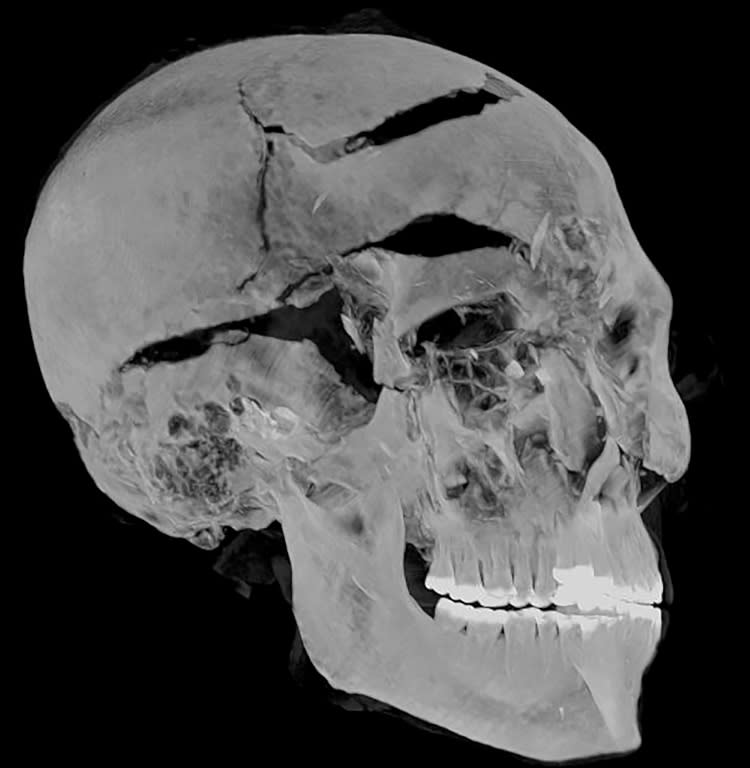A high-tech study has offered new clues about the murder of a pharaoh who ruled Egypt more than three millennia ago.
Seqenenre Tao II, ‘the brave’, ruled over southern Egypt about 1600 BC.
He led famous Egyptian troops against the Hyksos, a dynasty of West Asian origin that took over the Nile Delta.
Seqenenre’s body was examined in the 1960s by means of X-rays, which revealed head wounds concealed by embalmers and gave theories that he had been killed in a fight or an assassination.
After archaeologist Zahi Hawass and Cairo University professor of radiology Sahar Salim performed CT scans and produced 3D images, they concluded he had been killed in an “execution ceremony” after being captured on the battlefield. was taken.
The CT scan “revealed details of the head injuries, including wounds not discovered in previous investigations and skillfully concealed by embalm workers,” the Ministry of Antiquities said in a statement.
The researchers are studying these injuries against various Hyksos weapons stored in the Egyptian museum in Cairo, including an ax, a spear and several daggers.
The mummy’s “deformed hands indicate that Seqenenre may have been captured on the battlefield, and that his hands were tied behind his back, preventing him from diverting the vicious attack” on his head, the statement said.
Their study, published in Frontiers of Medicine, also showed bone scans showing that the pharaoh was about 40 years old when he died.
Researchers have been trying for decades to decipher the death of Seqenenre, whose body was found in the late 19th century, with visible wounds on his face.
hha / emp / bfi / par / fz
